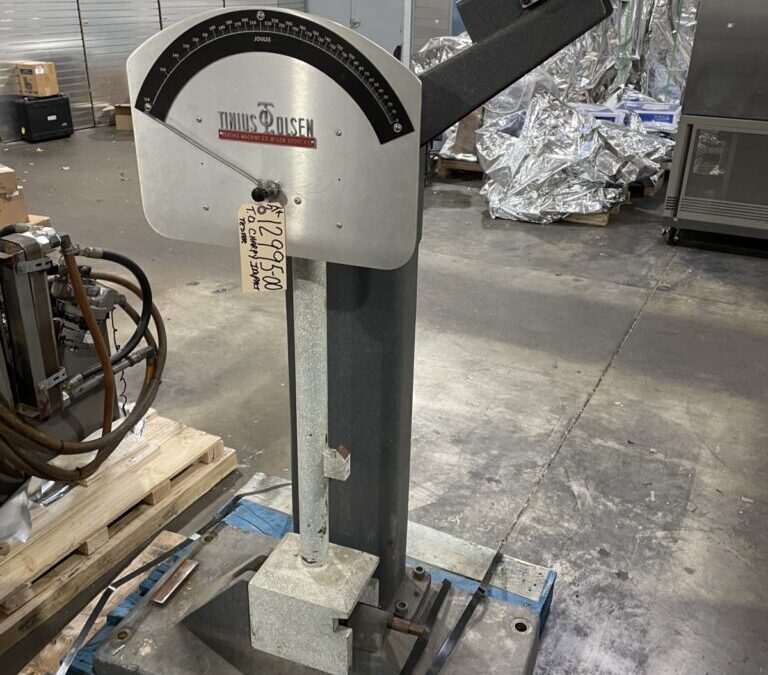Ensuring precise and dependable test outcomes in Charpy testing is crucial. In the realm of material science, Charpy testing plays a role in assessing the toughness and impact resistance of materials. Charpy testing offers insights into their real-world performance, whether dealing with metals, polymers, or other substances. To achieve reliable results, it’s essential to adhere to safety measures and industry best practices. This article delves into the steps of Charpy testing, highlighting considerations for upholding safety protocols and obtaining precise data.
Key Aspects of Charpy Testing
1. Grasping the Essence of the Charpy Test Technique
Charpy testing entails exposing a specimen to an impact load while gauging the energy absorbed by the material upon fracture. By assessing how well a material absorbs energy without rupture, a Charpy tester offers insights into its resilience against abrupt loading.
2. Selecting Appropriate Equipment
To conduct Charpy tests, it’s vital to opt for equipment that aligns with industry regulations. This involves utilising a pendulum-style impact tester featuring a hammer to deliver accurate impacts on V-notched specimens.
Safety Measures for Charpy Testing
1. Personal Protective Equipment (PPE)
It’s crucial to prioritise safety in a lab setting at all times. When conducting Charpy tests, it’s essential for operators to wear the appropriate PPE. This typically involves wearing safety glasses or goggles, gloves made of materials that resist punctures (like nitrile or neoprene gloves), lab coats or protective clothing, and durable closed-toe shoes.
2. Safe Laboratory Setup
Setting up a laboratory environment safely is key to reducing risks during Charpy testing. Signs indicating hazards should be clearly marked and easily visible, including notifications about restricted areas where specimen preparation and testing occur.
3. Proper Handling of Specimens
Taking care in preparing and handling specimens is crucial. Operators should wear appropriate PPE and use tools designed specifically for specimen preparation. Always handle specimens with care, avoiding impacts or mishandling that could impact the test results.
4. Proper Instrument Calibration
Regularly calibrating the Charpy testing machine is essential for obtaining accurate results. The pendulum, anvil, and striker should undergo calibration following the manufacturer’s guidelines or industry standards. Ensure the stability of the system and that all relevant safety switches are working properly.
Best Practices for Charpy Testing
1. Selecting Appropriate Samples
Choosing test samples that accurately represent the material under evaluation is crucial for obtaining accurate data. It’s important to ensure that the samples are large enough to undergo tests without altering their properties significantly.
2. Conditioning of Specimens
Properly conditioning specimens is vital to achieve precise test results. Before conducting tests, specimens should be placed in a controlled environment for a period to allow them to reach equilibrium with the laboratory setting.
3. Ensuring Dimensional Accuracy
Attention to detail is necessary when it comes to specimen dimensions, as minor deviations can impact energy absorption during Charpy testing. Utilising tools like callipers for dimension measurements can help uphold accuracy in data analysis.
4. Accounting for Environmental Factors
Elements such as temperature and humidity can influence the performance of materials during Charpy testing. It is crucial to consider these factors by conducting tests under specified conditions or ensuring temperature and humidity levels are controlled throughout the testing process.
5. Maintenance of Tools and Equipment
Regular maintenance is key for both safety purposes and obtaining accurate data from Charpy tests. Adhering to equipment maintenance schedules provided by manufacturers, which include lubricating moving components as needed, ensuring alignment of anvils and notched bars, and routinely inspecting guards, is essential.
Sample Preparation and Notching Methods
To obtain consistent outcomes, it is vital to employ precise techniques for preparing samples in Charpy testing. It’s crucial that the samples are smooth, devoid of any surface irregularities, and feature notches. These notches are meticulously crafted into the specimens to introduce a point of stress concentration during testing.
To achieve notches, it is advisable to utilise machining technologies such as electric discharge machining (EDM) or laser notching. These methods enable control over notch depth, radius, and angle, thereby reducing the likelihood of irregularities that could impact test results.
Conclusion
Charpy testing offers insights into material toughness and resistance to impact across industries like aerospace, automotive, manufacturing, and construction engineering, among others. To ensure accurate results while prioritising operator safety, it is essential to adhere to established safety protocols and best practices. By following these guidelines, materials scientists and engineers can acquire data that facilitates the development of robust and secure products for diverse applications.


